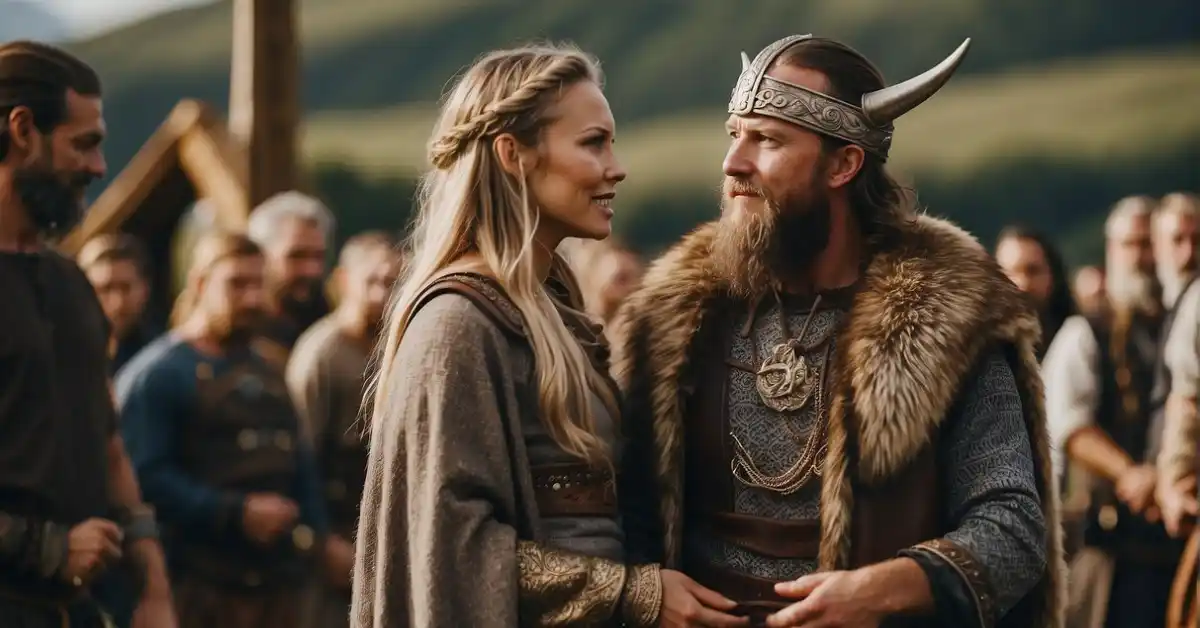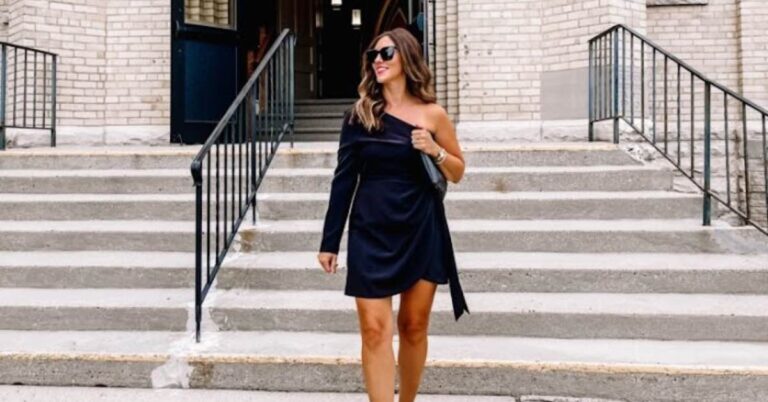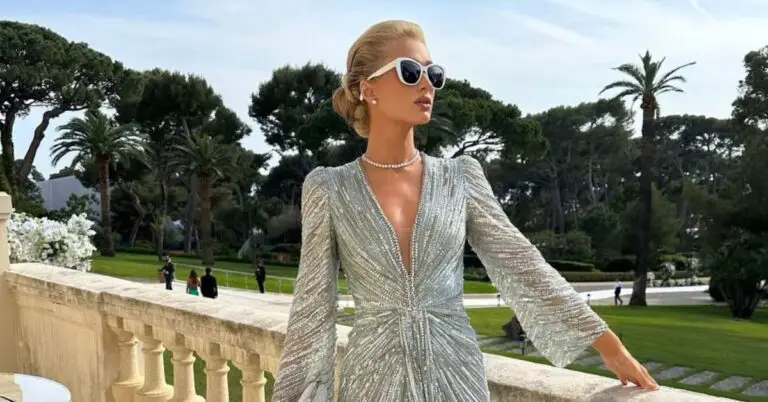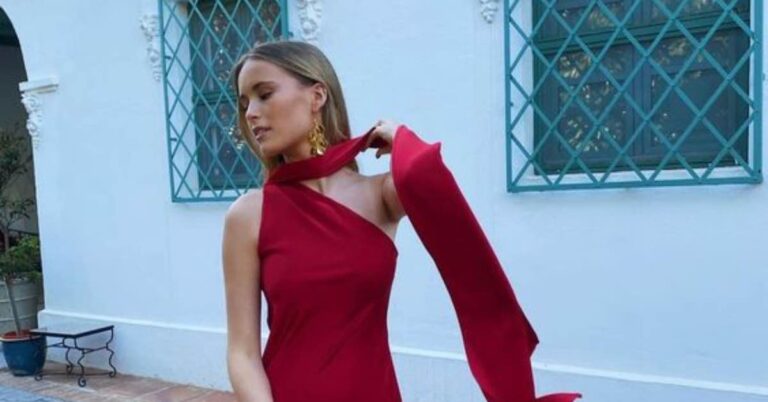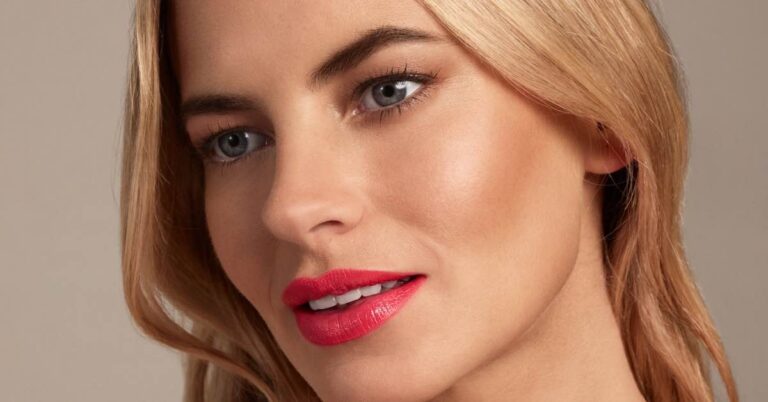I have carried out extensive investigations into Viking Weddings and have gathered all the crucial details in this article so you can avoid the exhaustive search across the web that I endured.
You can find all the information and design ideas summarized here. Have fun planning your wedding!
Viking Wedding Overview
When you imagine a Viking wedding, think of a ceremony deeply rooted in Norse culture, symbolizing not just the union of two individuals but also a commitment steeped in tradition. These weddings were a blend of legal contract and social celebration, reflecting the values of love and partnership within Viking society.
Traditional Practices
Feasting and Celebration: Your Viking ancestors would likely have celebrated a marriage over the span of a week, with each night dedicated to feasts shared among family and friends. This wasn’t just about enjoyment; it was a communal affair that underscored the significance of the wedding within the community.
Date and Preparations: If you were planning a Viking-style wedding today, you’d typically set the event on a Friday, honoring the goddess of fertility, Freya, in hopes of a fruitful union.
Ceremonial Significance
Sword Exchange: Imagine yourself in a traditional Norse wedding, where exchanging swords was a standout custom. As a bride, you would receive your new husband’s ancestral sword to pass down to future generations, while the groom would receive a symbolic sword in return, representing the transfer of protective duties.
Symbolism in Rites: Norse mythology played a significant role during the wedding ceremonies, where you’d find representation of Thor via his hammer Mjolnir, ensuring strength and sanctity in the marital bond. Norse gods were invoked and offerings made, reflecting the spiritual dimensions of Viking marriages.
Pre-Wedding Rituals
Viking nuptials began with significant pre-wedding rituals that set the stage for the matrimonial covenant. As a bride or groom during Viking times, you were expected to follow certain customs to ensure good fortune and a harmonious bond.
Bridal Preparations
Bathing: Your transformation into a bride began at the bathhouse. It was more than just a bath; it symbolized purification and a farewell to your former life. A luxurious soak, surrounded by close female friends and family, prepared you for the new chapter ahead.
Kransen: After the bath, you’d don the Kransen, a gilt circlet worn by Scandinavian maidens to signify purity and betrothal. The Kransen wasn’t merely ornamental—it was a cherished piece, often passed down through generations, that you would wear until the wedding day.
Headdress: Viking wedding attire was incomplete without a headdress. Upon removing the Kransen, you would wear a special headdress to signify your transition from maiden to married woman.
Groom’s Preparations
Sword Ceremony: As a groom, you were expected to undergo a symbolic transition marking your journey to adulthood and readiness for marriage. This often included the retrieval of an ancestral sword, a treasured heirloom symbolizing your family lineage and the responsibilities you were about to embrace.
Viking Wedding Attire: Your attire was not only practical for the era but also carried deep cultural significance. A well-groomed appearance was paramount; meticulously clean and traditionally styled garments demonstrated your respect for the occasion and readiness for the lifelong commitment.
Ceremony Traditions
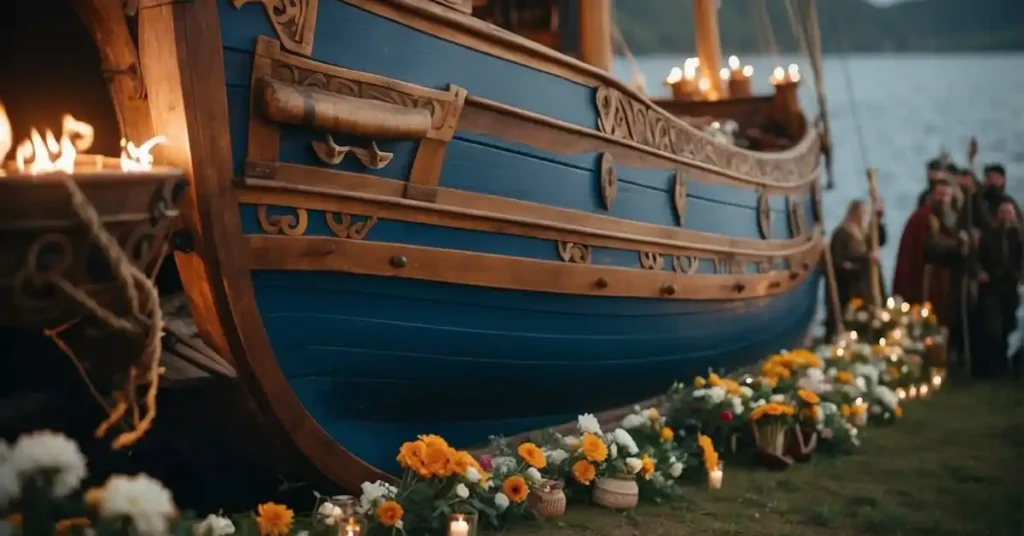
When you picture a Viking wedding, imagine a blend of solemnity and vibrant rituals that solidify the union between two individuals. Central components such as the exchange of swords and rings, handfasting, and the invocation of the Norse gods contribute to a ceremony steeped in tradition.
Exchanging Swords and Rings
At your Viking wedding, the exchange of swords symbolizes the transfer of protection between families. You receive your ancestor’s sword as a heritage to bring into your marriage. Along with swords, you also exchange rings, which are a symbol of eternal love and commitment, similar to today’s weddings but deeply rooted in Viking culture.
Handfasting Ceremony
During the handfasting ceremony, your wrists are tied together with a cord or ribbon, symbolizing your union. This ancient practice binds you not just in the physical world, but your spirits are also entwined, making the promise of togetherness a focal point in Viking wedding traditions.
Religious Aspects
A gothi, a Viking priest, traditionally officiated the ceremony and called upon the Norse gods, like Thor, god of thunder, and Freya, the goddess of marriage, to bless your union. The pronouncement of vows might invoke these deities to secure a prosperous and fertile life, embedded with traditional blessings.
Wedding Feast and Celebrations
In Viking weddings, the feast and its celebrations were central to the occasion. The spread was rich with various meats and mead, and the air filled with music, dance, and laughter. Now, imagine you’re stepping back in time to experience it all firsthand.
Feasting and Food
At your Viking wedding feast, you would find tables laden with food. Imagine a variety of meats such as pork and fish, ready to satisfy the heartiest of appetites. You’d be served lots of bread accompanied by in-season fruits like apples and nuts; hazelnuts and walnuts were common.
A special highlight would be the honey mead, a drink made from honey and water, central to such occasions and sometimes even a legal requirement at weddings.
Entertainment and Games
The air buzzed with the sound of festivities; a Viking wedding was incomplete without dance and music. You’d join in joyous dances, perhaps to the beat of drums and the melody of flutes.
Moreover, various games that tested skill and strength would have been part of the fun. Laughter and cheers would fill the atmosphere as guests and newlyweds partook in these traditional Viking activities, creating memories to last a lifetime.
Marital Symbols and Attire
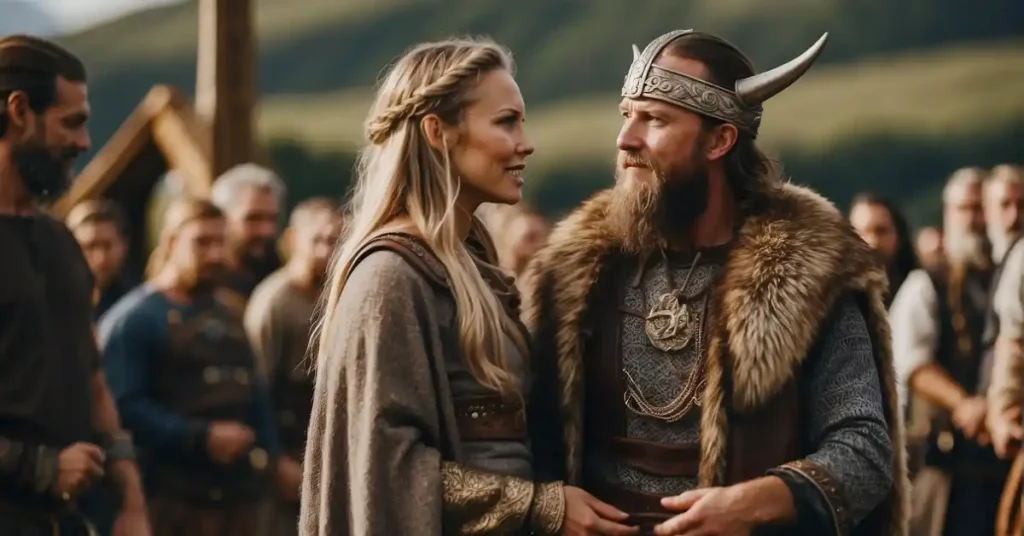
In Viking weddings, your attire and the symbols you incorporate hold deep significance. As a bride, you might envision yourself donning a traditional long dress, typically fashioned from linen or wool, and adorned with a bridal crown or headdress embellished with flowers or beads, reflecting your beauty and femininity. The clothing both you and the groom wear is not just for ceremony; it’s a nod to heritage and tradition.
Table of Common Symbolic Elements:
| Symbol | Significance |
|---|---|
| Bridal Crown | Purity and connection to Norse heritage |
| Mjolnir Pendant | Strength and protection in marriage |
| Valknut Symbol | Unity and eternal bonds of love |
It’s not just about the clothing, though. Your wedding rings signify the eternity of your bond, often made from materials that carry weight in Norse mythology. Additionally, the exchange of swords between you and your groom represents the mutual trust and responsibility you’re undertaking.
For the men: Step into your role as the proud groom donning a tunic, trousers, and perhaps a fur cloak. The strength you embody will be further symbolized by the Mjolnir, the hammer of Thor as a pendant, indicating the protective role you pledge over your new union.
Remember, each element from the Valknut to the exchanged swords adds layers of meaning to your special day, firmly rooting your marriage in the cherished traditions of the Vikings. These symbols aren’t mere decorations; they’re powerful reminders of the vows and commitment you, the bride and groom, embark upon together.
Post-Wedding Customs
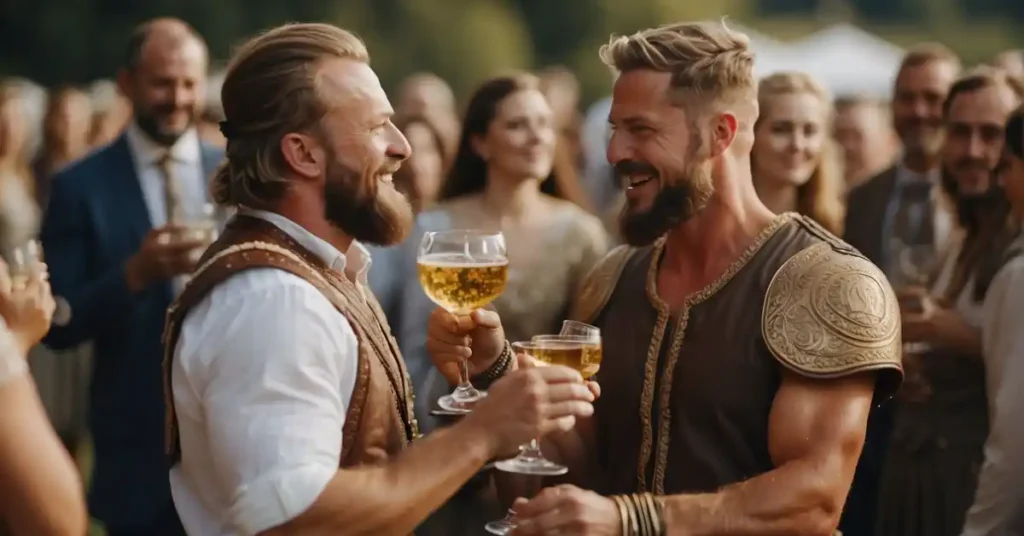
After the grandeur of the Viking wedding ceremony, the celebration of the couple’s new beginning continues with rich traditions aimed at promoting fertility, prosperity, and the transfer of protection within the marital home.
Honeymoon Traditions
Your first steps as a married couple in Scandinavia often involved a honeymoon period, which was not just a holiday but a time filled with rituals symbolizing fertility and prosperity.
Honeymoon rituals might begin with the bridal bed, where specific customs, such as the bride laying under a duvet decorated with symbols of fertility, were observed. This rite was more than a romantic tradition; it was steeped in the belief that acts performed during this time had a significant influence on your future together.
Married Life
As you settled into married life, the focus shifted to social and legal status through the concept of mundr, a dowry-like tradition which emphasized the transfer of protection and prosperity. Your married status was publicly recognized, conferring upon you both certain rights and responsibilities within Viking society.
The concept of virginity was not as pivotal as fertility, which held the core value in your new life, as children and the continuation of lineage were prime concerns. The newlywed wife’s integration into her husband’s community was vital; she often received a key to the household, signifying her role and authority within the new family unit.
FAQ
What do you need for a Viking wedding?
For a Viking wedding, you need traditional attire like tunics and dresses, Viking-inspired decor, ceremonial weapons, and mead for toasting.
What color did Viking brides wear?
Viking brides wore colorful dresses, often in shades of red, blue, or green, adorned with intricate embroidery and metal embellishments.
How did Vikings celebrate marriage?
Vikings celebrated marriage with feasting, drinking, and rituals like exchanging vows, breaking a glass, and sharing a ceremonial cup of mead.
What are the vows of a Norse wedding?
Norse wedding vows often include promises of loyalty, strength, and devotion, invoking gods like Odin and Thor for blessings upon the union.
If you liked this blog article about Viking Wedding, don’t forget to follow us on Pinterest so you don’t miss any more news. Or take a look at our other articles:
Related Posts:

